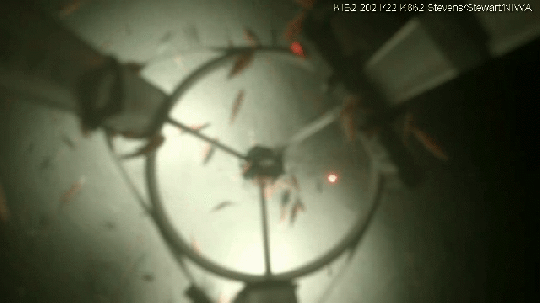Antarctica, 500 meters under the ice, is home to a hidden world of marine animals.
These little shrimp-like creatures were photographed by scientists after inserting a camera into a drilled hole and discovering a river at the bottom of a cave under the ice.
The discovery was made hundreds of miles from the edge of the Ross Ice Shelf, but the river is believed to be a confluence of the sea.
“I thought I didn’t have a camera for a while, but when I focused, I noticed a pile of arthropods about 5mm wide,” said Craig Stevens of the National Institute for Water and Atmosphere (Niwa).
“We were experimenting with other parts of the ice shelf and we thought we were touching something, but this time it was a big surprise,” he told The Guardian.

Scientists have long known that a network of rivers and lakes exists beneath Antarctica, but until now it has not been directly observed.
“Having all these animals swim around our team meant there was clearly a major ecosystem, so we were jumping,” Stevens said.
While the researchers studied the composition of the water, the group left an instrument in the river to observe the “hidden world” there.
In March, scientists recorded the collapse of an ice shelf nearly the size of London in Antarctica.

The collapse of the ice shelves occupying the Konger and Glenzer glaciers from warm water captured by satellite imagery was the first in human history to show that ice shelves had collapsed in the Antarctic ice region.
Antarctica is divided into East Antarctica and West Antarctica, and the Transantarctic Mountains are divided into two parts. West Antarctic ice is more volatile than East Antarctic ice, so ice melt and ice shelf collapse are common.
Source: Metro
I have worked in the news industry for over 10 years. I have a vast amount of experience in covering health news. I am also an author at News Bulletin 247. I am highly experienced and knowledgeable in this field. I am a hard worker and always deliver quality work. I am a reliable source of information and always provide accurate information.










